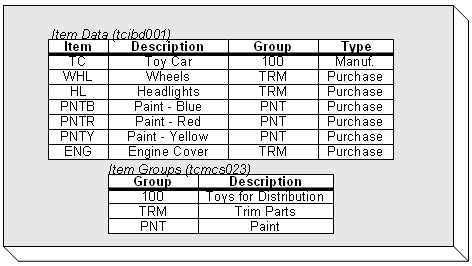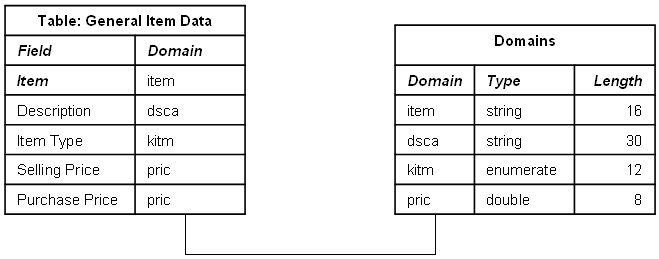Table definitionsA table definition defines the structure of a table. A table definition contains fields and indices. Table fields are linked to domains that define the data type and several characteristics of the fields.  Table Data Example Fields, domains and indices A table has fields. Table fields store individual pieces of data such as a customer name, the quantity of an item ordered, or the date that a journal entry was made. Table fields are linked to domains. Domains are components that define common information about data such as:
Domains insure consistent data types for similar table fields.  Table Fields and Domains Example A table must have at least one index. An index consists of one or more table fields that are used to sort and search records in the table. The first index is always the Primary key, which is the unique identification for a record in a table. Related Tables and References The table may have a related table. A related table means that a field in the table will refer to the key field of another table. In this way, data can have relationships: customers can have orders; inventory stores items in warehouses; and employees work in a department. You can use a tool in the Enterprise Modeler to create diagrams from these defined relationships. To create table definitions You can create table definitions in the Table Definitions (ttadv4520m000) session. For details, refer to To create a data model.
| |||